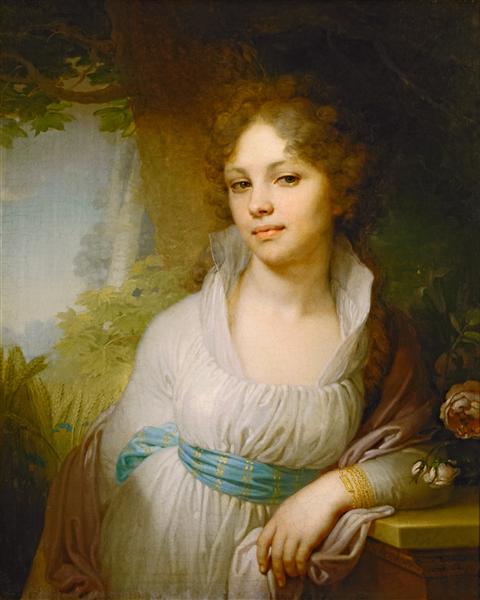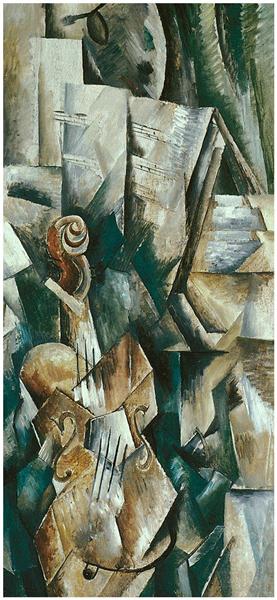
The 18th century went down in the history of Russian pictorial art as the “age of portrait”, one of its best portrait painters is Vladimir Lukich Borovikovsky. An important role in his fate was played by the journey of Catherine II to the Crimea in 1787. On the way of the empress, palaces and triumphal gates were erected. For one of these palaces, which was intended to receive the Russian empress, the marshal of the nobility commissioned V.L. Borovikovsky to write several allegorical paintings. The queen especially liked two of them. On one, she herself was depicted in the image of Minerva, surrounded by seven ancient Greek sages, to whom she explains her order, on the second, Peter I plowing the land, on which, again, she sows seeds, in places already bearing fruit. Having learned the name of the artist, the empress invited him to go to Petersburg.
V.L. Borovikovsky was incredibly hardworking, painted a lot of portraits, and he was commissioned to paint portraits of all members of the imperial family. The thoughtfulness of the picture, skillful use of the brush, freshness of color, the ability to depict all kinds of fabrics and clothes are staged by V.L. Borovikovsky in a number of famous portrait painters, although he did not receive a thorough classical education. In the portraits of V.L. Borovikovsky, one can see the tenderness of the brush, a delicate delicate drawing, the correctness of forms and always the expression of thought on the face he depicts.
The portrait of Maria Ivanovna Lopukhina is the most poetic and feminine of all the artist created. At the same time, he discovers the established moral and aesthetic ideal of V.L. Borovikovsky. The image of M.I. Lopukhina captivates the viewer with gentle melancholy, extraordinary softness of facial features and inner harmony. This harmony is conveyed by the entire artistic structure of the picture: both by the turn of the head and by the expression on the woman’s face, it is also emphasized by individual poetic details, such as roses plucked and already drooping on the stem. This harmony is easy to grasp in the melodious smoothness of the lines, in the thoughtfulness and subordination of all parts of the portrait. The face of M.I. Lopukhina, perhaps, is far from the classical ideal of beauty, but it is filled with such ineffable charm, such spiritual charm that next to him many classical beauties seem like a cold and lifeless scheme. The captivating image of a gentle, melancholic and dreamy woman is conveyed with great sincerity and love, the artist reveals her spiritual world with amazing convincingness. A pensive, languid, sad-dreamy look, a gentle smile, the free ease of a slightly tired pose, smooth, rhythmically falling lines, soft, rounded shapes, a white dress, a lilac scarf and roses, a blue belt, ashy hair color, a green background of foliage, and finally soft airy haze filling the space – all this forms such a unity of all means of pictorial expression, in which the creation of the image is revealed more fully and deeper.
M.I. Lopukhina stands in the garden, leaning her elbows on an old stone console. The contour flowing around her figure – now lost, now appearing in the form of a thin, flexible line – recalls the contours of antique statues in the memory of the viewer. Falling, converging or forming smooth folds, the subtlest and soulful features of the face – all this makes up, as it were, not painting, but music. Ground paints V.L. Borovikovsky applied, albeit a dense, but thin and even layer, while achieving a kind of vibration of color. When painting this portrait, the artist preferred a cold scale – lilac-yellow and white, pale blue and yellow, dimmed green and ashy colors. The figure of M.I. Lopukhina is surrounded by the airy haze of the landscape, but she does not merge with it, but acts as a clear plastic volume, rhythmically connected with it: the bowed torso and the position of the hand seem to echo the hanging branches and tree trunks depicted in the background. Subtly simulates shapes and soft, glancing light. V.L. Borovikovsky used to include landscape backgrounds in his portraits. But it is now, developed with the utmost care, that they become an important component of the artist’s portrait characteristics, they acquire real meaning. Ears of ripe rye, tender greens, cornflowers – everything is designed to emphasize not only the “simplicity” of the image, but also to express its dreamy mood. (Despite the fact that art critics note some conventionality in this landscape with “rural” signs.) They also notice a certain amount of artificiality in the carelessly pensive pose of a woman. But at that time the heroes themselves seemed to demonstrate their ability for lofty feelings and heartfelt experiences, and after them the artists (including V.L. Borovikovsky) had to depict these feelings, which were signs of a worthy and virtuous soul.
It is known that M.I. Lopukhina was never happy – a year later, after V.L Borovikovsky painted her portrait, she died. But this woman concealed and carried in herself so much tenderness, love, purity of poetry, beauty of human feeling that, according to the first impression of the portrait he saw, the poet Y. Polonsky formed heartfelt verse lines:
She passed long ago, and those eyes are gone And that smile is gone that silently expressed Suffering – a shadow of love, and thoughts – a shadow of sadness, But Borovikovsky saved her beauty So, part of her soul did not fly away from us. And this look and this beauty of the body Will attract indifferent offspring to her, Teaching him to love, suffer, forgive, dream.
Year of painting: 1797.
Painting dimensions: 72 x 53.5 cm.
Material: canvas.
Writing technique: oil.
Genre: portrait.
Rococo.
Gallery: State Tretyakov Gallery, Moscow, Russia.


